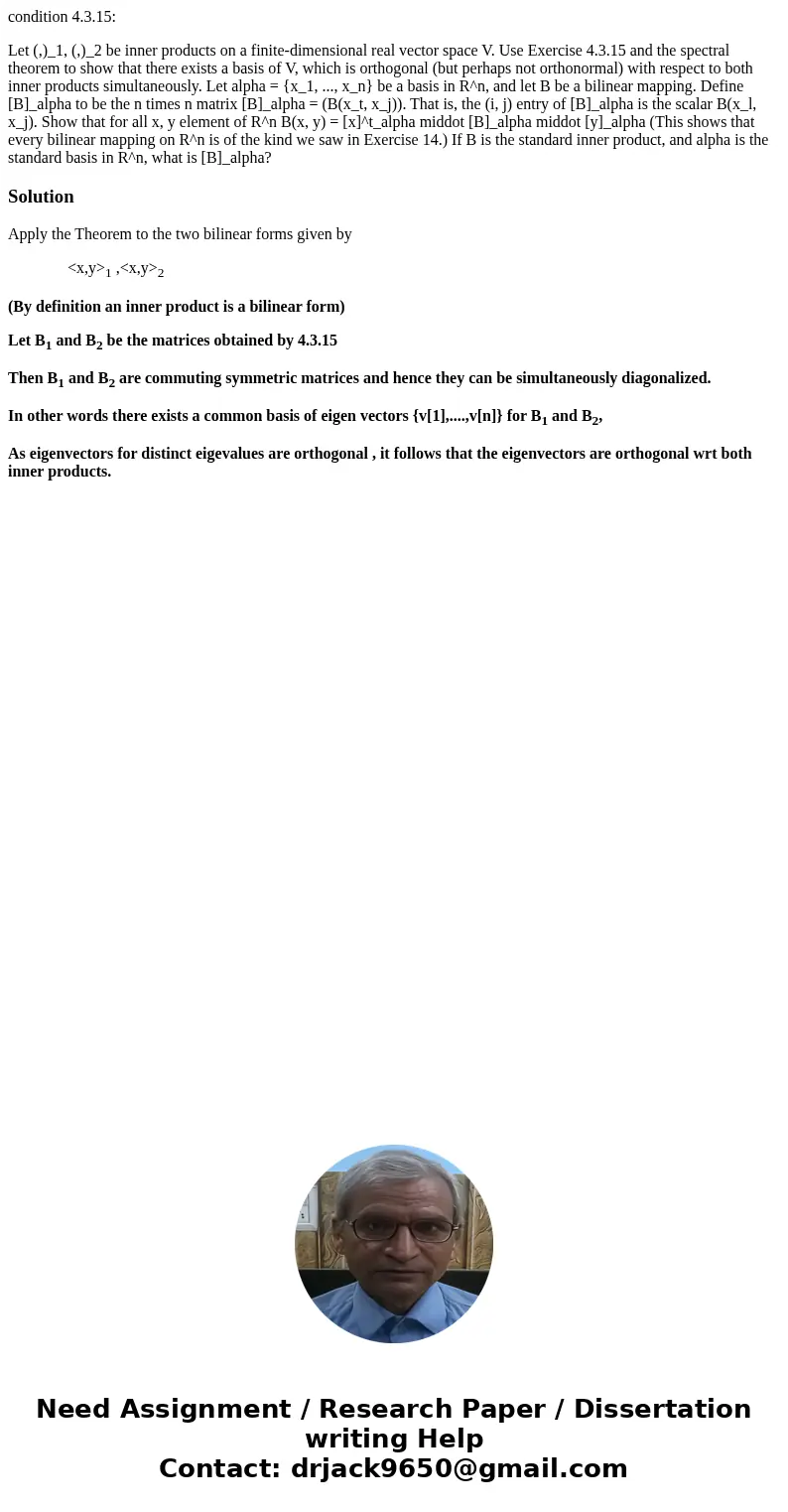condition 4315 Let 1 2 be inner products on a finitedimensio
condition 4.3.15:
Let (,)_1, (,)_2 be inner products on a finite-dimensional real vector space V. Use Exercise 4.3.15 and the spectral theorem to show that there exists a basis of V, which is orthogonal (but perhaps not orthonormal) with respect to both inner products simultaneously. Let alpha = {x_1, ..., x_n} be a basis in R^n, and let B be a bilinear mapping. Define [B]_alpha to be the n times n matrix [B]_alpha = (B(x_t, x_j)). That is, the (i, j) entry of [B]_alpha is the scalar B(x_l, x_j). Show that for all x, y element of R^n B(x, y) = [x]^t_alpha middot [B]_alpha middot [y]_alpha (This shows that every bilinear mapping on R^n is of the kind we saw in Exercise 14.) If B is the standard inner product, and alpha is the standard basis in R^n, what is [B]_alpha?Solution
Apply the Theorem to the two bilinear forms given by
<x,y>1 ,<x,y>2
(By definition an inner product is a bilinear form)
Let B1 and B2 be the matrices obtained by 4.3.15
Then B1 and B2 are commuting symmetric matrices and hence they can be simultaneously diagonalized.
In other words there exists a common basis of eigen vectors {v[1],....,v[n]} for B1 and B2,
As eigenvectors for distinct eigevalues are orthogonal , it follows that the eigenvectors are orthogonal wrt both inner products.

 Homework Sourse
Homework Sourse